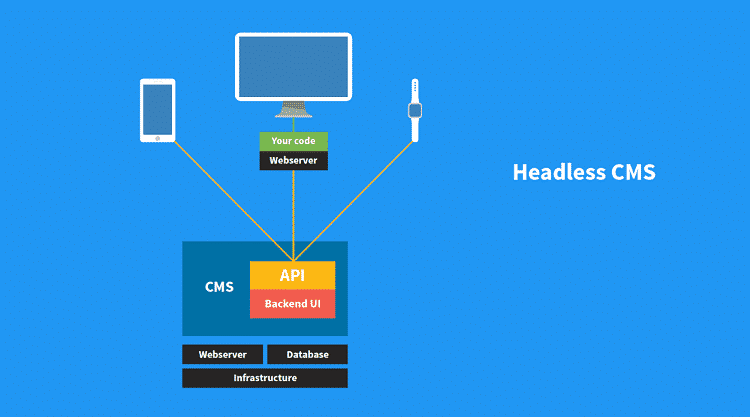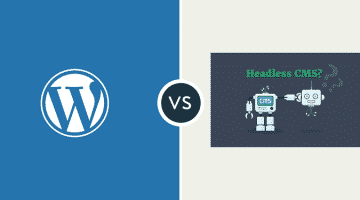CMS or content management system is used by almost all companies as it is an integral part of any digital interface. There are various types of CMS available, however, in recent times, there is a massive migration from traditional CMS to headless CMS. This is because traditional CMS offers very little flexible which is not suitable for any organization. The integration of new technologies and formats is not possible without creating complexity. However, adapting to the new technologies like mobile functionalities, artificial intelligence, and various such modern technologies is a necessity. This is where headless CMS comes into play.
Understanding Headless CMS –
The headless CMS is back-end only CMS that is built from scratch like a content repository. The content is made available through Restful API for displaying in different devices. Therefore, the content is presented as a service (CaaS) and hence, the overhead constraints disappear. Starting from creating and authoring content to organizing content and improving collaboration, everything becomes less hazardous. However, there is no web delivery layer as in templating system. That is why it is called headless CMS where head stands for the frontend technology.
But there are no specific rules and programming language to use, and therefore, the developers get complete freedom and control over the content. From a technical point of view, a headless CMS uses APIs to render content using the codebase. Hence, there is no complex relationship between content and code. That is why developers find it easy to maintain the system using headless CMS. It does not necessarily require a particular host like WordPress, and it can be self-hosted. That is why there is no headache of security updates and other maintenance issues.
Headless CMS Comparison –
Headless CMS is always compared to coupled CMS and decoupled CMS. In a coupled CMS, the content management application and content delivery application are available in a single application. Therefore, components like back-end tools, editing tools, design tools, and templates cannot be separated. This is good when one user is handling everything which is quite rear. It is suitable for blogs and basic websites. However, moving code to another CMS is extremely difficult. Not just that, one has to spend a lot of time in installation, upgrading, customization, and fixing errors from one place only.
On the other hand, there are many who are confused with decoupled and headless CMS as they seem to be similar in many aspects. From the name you can understand that a decoupled CMS separates content management application and content delivery application. The content is delivered by synchronization. The main difference lies in the fact that a decoupled CMS readily prepares content for presentation and sends into the delivery stream where a headless CMS does not do anything and wait for a request for content to arrive.
There is no doubt that a decoupled CMS is better than a coupled CMS in terms of scalability and security. However, the headless CMS is still better due to the following reasons.
Benefits Of Headless CMS –
Omnichannel Presentation – The best feature of using headless CMS is its independence. This means you can push the same content on all the channels possible starting from website and app to virtual reality and digital assistant. Therefore, there is no attachment and no modifications to be made to make it platform-independent.
Ease Of Use – Traditional CMS has certain ways and rules to follow and therefore, it is difficult in certain areas. This is because the traditional CMS providers try to offer anything and everything in one package and this leads to complexity. Headless CMS focus mostly on content management and thereby, keeping things simple and easy for the users. Everything can be managed from one back end.
Flexibility – Developers can choose any programming language for the back-end development as well as any technology for front-end development. This is because the integration is done via APIs over RESTful communication. Therefore, multiple programming paradigms are possible, and content can be delivered over multiple channels simultaneously without a single issue.
Scalability –Along with flexibility, scalability is another reason for the popularity of headless CMS. With headless CMS, you can adapt to any new technology instantly as it has no prejudice or attachment to anything. Therefore, changing the framework to introducing a new technology, everything is possible. The stateless APIs also enable high scalability.
Operating Cost – One of the main reasons for the wide acceptance of headless CMS is its low operating cost which is always beneficial for a company. A headless CMS is easy to install and operate, and they are based on cloud model where the delivery cost is also low yet all the processes are robust. Besides, the creators and developers can work simultaneously, and projects can be completed in lesser time. Moreover, you do not have to spend high on security measures as it is distribution rather than direct delivery form database. Therefore, along with traditional CMS, you need to know headless CMS development as in the future most of them will migrate to headless CMS, and new development will be only on headless CMS.


